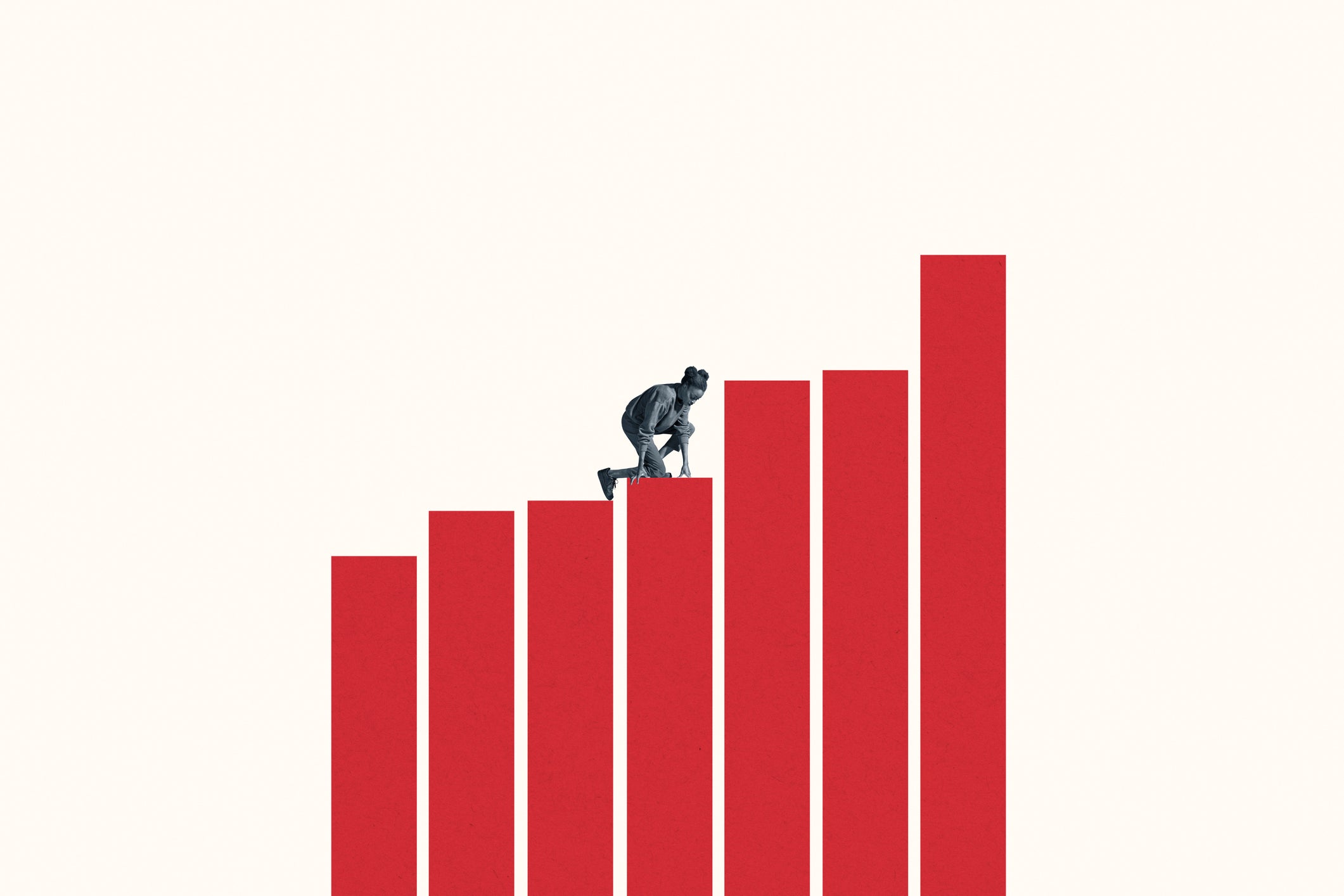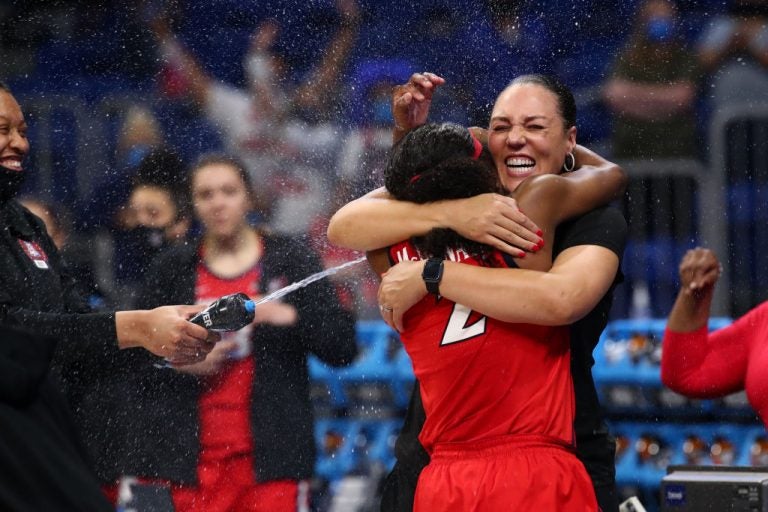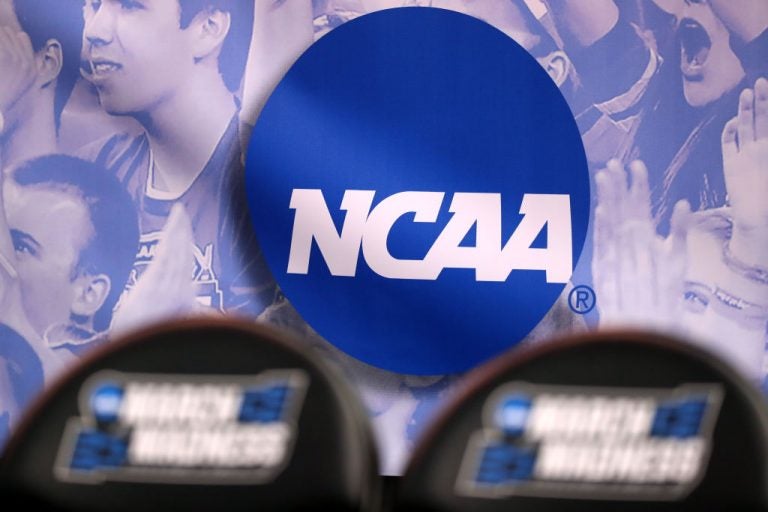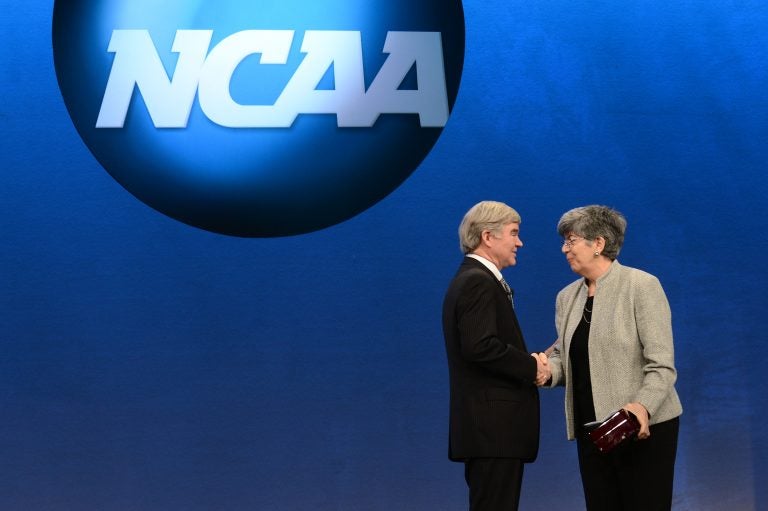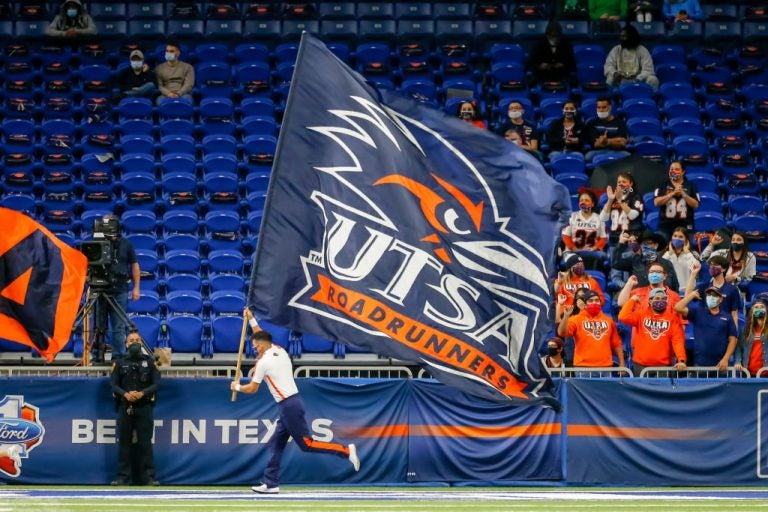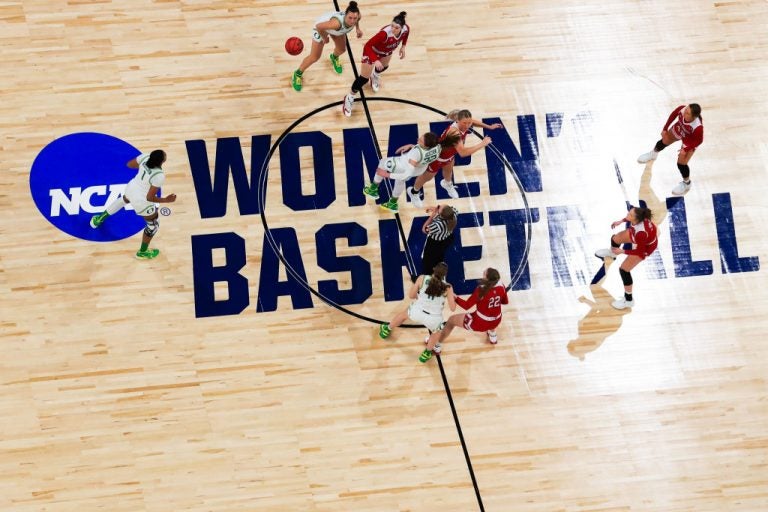Chutes and Ladders: Black Women ADs’ Long Journey to the Top
Why this matters
While recent hires of Black women athletic directors by Power 5 universities hint at a new moment for the NCAA, history shows that a generation of HBCU leadership was disempowered when the NCAA took control of women's sport in the 1980s. This new generation of disruptors has made itself undeniable, and is poised to shake up college sport once again.
Last week, Duke University named Nina King its next athletic director. King will be both the first woman and first person of color to serve in that role. She will also become the third Black woman to run an athletic department in the Power Five, a group of the most influential and lucrative college sports conferences.
Less than five years ago, no Black woman had ever been the AD at any of the 65 schools in the Power Five. The hires of Carla Williams by the University of Virginia in 2017 and Candice Story Lee by Vanderbilt University in 2020 raised the visibility of Black women in athletic administration and opened historically closed doors. King’s hiring adds to that momentum.
Yet a new study conducted by the Global Sport Institute at Arizona State University on athletic director hiring practices at National Collegiate Athletic Association schools shows that those doors remain heavy. Examining 385 athletic director changes across 248 Division I athletic departments over a 10-year period from 2010 through 2019, the study found that Black women are struggling to find footing at the highest levels of leadership, with just 11 hired as athletic directors during that time period.
This is not particularly surprising. Athletic directors remain disproportionately White and male. Over the decade studied, 77 percent of incoming hires were White, and 88 percent were male. However, while conversations about and studies of racial and gender equity in college sports administration largely have focused on Black men and White women, respectively, the GSI data tells what ASU researcher Dr. Karen Gallagher describes as a “different story” about ADs who are Black women than about ADs who are White women and Black men.
History tells a different story, too.
The paltry numbers seen today for Black women who are ADs both obscure and reflect a much longer story that is less a tale of exclusion and slow-moving progress than a perpetual game of chutes and ladders. Since the early 20th century, capable and determined Black women repeatedly have climbed to positions of power within athletic departments – only to abruptly slide back down. Their journeys reveal much about roads that college sports could have taken, about ongoing struggles for control of the industry, and about the obstacles Black women continue to face today.
The Pioneers
While King, Lee, and Williams have captured headlines in the Power Five, the largest and most notable cluster of Black women ADs can be found at Historically Black Colleges and Universities, commonly referred to as HBCUs.
North Carolina Central University’s Ingrid Wicker McCree, Norfolk State University’s Melody Webb, and Alabama State University’s Jennifer Williams are part of a growing cohort of Black women running HBCU athletic departments. Taken together, HBCUs accounted for 36 percent of all Black women hired as athletic directors from 2010 to 2018.
For Black women seeking opportunity and advancement in sports, this is nothing new. Like Predominantly White Institutions (PWIs), HBCUs grew rapidly after World War I – and like PWIs, they considered athletics to be a central feature of the modern university.
Unlike PWIs, HBCUs did not focus primarily on football and a handful of other men’s sports. Instead, they saw athletics for both men and women to be essential. As then-Florida Agricultural and Mechanical University president J.R.E. Lee said in 1924, “No school in this day can expect to attract promising men and women that does not give organized athletics a foremost place. Where there are no athletics, it is very likely true that only deadheads are attracted. Young men and women of promise desire to be connected to institutions with spirit and force.”
However, including women didn’t mean treating them equally. Enter the pioneers – the first wave of Black women physical educators who pushed for control of women’s sports. In 1935, Sadie Daniels, the director of Physical Education for Women at Fisk University, penned a report noting that it had been a “very pleasant year” in which women at her school were “deeply interested in athletic activities.” It could have been a more successful year, Daniels argued, if Fisk had the right athletic facilities for women – and not poorly kept courts with splintering wooden floors. Declaring that “women should control women’s athletics,” Daniels laid out how Fisk should change by appointing more women to the school’s athletic control board and hiring a university comptroller specifically for women’s athletics.
Throughout the 1920s and 1930s, Daniels and other Black women positioned themselves as the gatekeepers for women’s athletics at HBCUs – and fought to protect them from the crude commercialism and misguided academic priorities they believed characterized men’s athletics. Elizabeth Dunham, then the women’s athletics director at Hampton Institute, said it would be “distinctly unwise” for women students to compete like men because they “come to school to study, and not to be members of a traveling troupe of athletic performers.” When Howard University tried to merge its men’s and women’s physical education programs, Maryrose Reeves Allen, then the school’s women’s physical education director, opposed the move, saying that “women’s interests in all directions [would] become submerged in the interest of men’s athletics.”
These women had an alternate vision for college sports, one that walked a fine line between competitive opportunities and traditional, controlled play. A little competition, they believed, was good – but too much would lead female athletes to fall into the same “vices” as their male counterparts. Allen advocated for a “productive athletics” that taught Black women how to honor their bodies, beauty, and health. Athletics would be a means to a greater social end, a way to mentally and physically prepare Black women to move their communities forward with strong children, hard work, and a commitment to collective uplift.
The pioneers faced a lack of professional opportunities. They constantly argued for fair wages and often performed duties beyond the scope of their jobs. Over time, they were pushed out of their leadership roles by Black men, who sought to control rapidly growing athletic departments and had a different vision for college sports: provide robust competitive opportunities to women, and let their athletic successes be a source of racial pride. Black women students jumped at the chance to participate. A 1939 study found that 75 percent of Black colleges supported varsity athletics for women – a wildly progressive statistic, given that 83 percent of PWIs at the time staunchly opposed the development of women’s sports.
This generation of students – the Black women who played sports at HBCUs in the 1940s and 1950s – would soon become the next group to climb the administrative ladder. In doing so, they would begin to shake up all of college sports.
The Disruptors
The Black women athletic administrators of the 1950s through 1980s didn’t ask for control. Drawing on their HBCU educations and athletic backgrounds, they created new programs, put themselves in charge, expanded leadership opportunities at Black schools, and pushed hard against racial barriers at barely integrated PWIs.
Nell Jackson was among them. A track and field standout at Tuskegee University – which under legendary athletic administrator Cleve Abbott offered work-aid scholarships to women athletes at a time when that was otherwise unheard of – Jackson won two national titles, competed in the 1948 Olympics, and took home gold and silver medals at the 1951 Pan-American Games. Following graduation, she became the school’s women’s track and field coach, then started a swimming program and named herself head coach of the men’s and women’s teams. In 1956, she became the first Black Olympic coach in track and field. Over the course of her career, she would coach track at four major PWIs, including the University of Iowa and the University of Illinois.
Fellow disruptor Katherine Bennett was a former athlete at North Carolina Agricultural and Technical State University. When her husband became the football coach at Virginia State University, Bennett jumped at the chance to join the school’s physical education department. There, she grew dissatisfied with Black women administrators being pigeonholed into coaching positions. So she created an Officiating Board and began training women officials. In the late 1950s, Bennett created guidelines that would ultimately lead to incorporating women’s athletics into the Central Intercollegiate Athletic Association, the NCAA-like governing body of HBCU sports.
When Title IX, a law prohibiting sex-based discrimination in educational institutions and programs that receive federal funding, passed in 1972, universities and colleges began to develop and expand women’s athletic programs. Compared to HBCUs, many PWIs were playing catchup. As a result, disruptors such as Jackson, who became the women’s AD at Michigan State University, found opportunities in newly created women’s AD positions in PWIs.
Tuskegee alumnus Dorothy Richey broke a bigger barrier in 1974, when she was named athletic director at Chicago State University and became the first woman in the country to lead a co-ed athletic department. Celebrated in Ebony and Essence magazines and shown encouraging swimmers and talking to towering basketball players, Richey offered a glimpse of the future: Black women, in control of college sports.
The disruptors had different visions for that future. Throughout the 1970s and 1980s, battles over Title IX, its implementation, and what sorts of resources should be allocated to women’s sports dragged out at schools across the country. Dr. Donnis Thompson, the women’s AD at the University of Hawaii, argued that people had “no imagination” about what women’s college sports could be but that she had “a vision and a dream.”
Thompson had a robust plan for the elevation of women’s sports. She published Op-Eds, gave speeches, and wrote letters insisting that women’s sports be equitably supported with bigger budgets, better facilities, and more influence within athletic departments. At Chicago State, however, Richey was wary of Title IX and the impact it could have on her ability to offer a wide variety of sports. At Michigan State, Jackson sought to expand women’s athletics while also maintaining control and influence within the school’s athletic department; she worried that Title IX would result in women’s sports becoming overly focused on revenue and competition, and submerged under the leadership of men.
Jackson’s concerns were not unfounded. In 1982, the NCAA effectively seized control of women’s college sports at PWIs from the Association for Intercollegiate Athletics for Women, which had governed the area since the early 1970s. Women coaches and administrators were pushed out of leadership positions, too. At the dawn of the Title IX era, more than 90 percent of women’s college sports programs were overseen by a female administrator – but by 1990 only 15.9 percent were.
Black women ADs were once again pushed toward the margins. Early barrier breakers, visionaries, and disruptors of the college sports status quo during a moment of upheaval and possibility, they are rarely included in the recounted histories of the early days of Title IX. Still, younger Black women were watching them – and drawing inspiration. Women like Dr. Robertha Abney, who would become an associate athletic director at Slippery Rock University. “Knowing Dr. Richey was functioning in that capacity,” she said, “I knew I could realize my dream."
A New Generation, Climbing Again
In the Title IX era, Black women have continued to push for an equitable seat at the college sports leadership table. Forming organizations, authoring dissertations and research reports, and giving interviews, they have spoken out about limited opportunities, barriers to career advancement, and an ongoing lack of Black women in senior decision-making roles.
For Black women aspiring to reach those positions, HBCUs continue to be both accessible and vital; according to ASU professor and GSI research director Scott Brooks, those schools’ history and culture may play a role in making them more welcoming. However, HBCUs are not without challenges. In 1997, Vivian Fuller became the first Black woman to lead a NCAA Division I athletic department with a football team at Tennessee State University. After Fuller was abruptly fired in 1999, she sued the school for wrongful termination, claiming that the school’s president and other officials “obstructed her efforts to help women’s teams and ‘ignored and diminished’ the contributions” that she made to the university. (The case was later settled.)
At PWIs, the barriers for Black women remain familiar and formidable. As the NCAA performatively grapples with racial and gender disparities in athletic administration, structural racism and sexism persists. Black women climbing the administrative career ladder face biased assumptions about their ability to raise money and manage football and men’s basketball programs. Stereotypically viewed as nurturers or caretakers, they often are pigeonholed within athletic departments as senior women administrators (SWAs), tasked with improving diversity and equity but not always given opportunities for professional development and to move up themselves. Dr. Akilah Carter-Francique, director of the Institute for the Study of Sport, Society and Social Change at San Jose State University, says that the “constant challenge to [a Black woman’s ] leadership abilities is tied to her intersectional identity … and the fact that in these spaces she is still [perceived as] the antithesis of an organizational leader.”
Reflecting on her decision to obtain a doctorate, Williams, the first Black woman AD at Virginia, once said that she felt “like if I was going to be an athletic director ... I needed to take away any excuse for me not to be hired.” Data from the Arizona State University Global Sport Institute study suggests that Williams isn’t alone in feeling this way: White male athletic directors were far less likely to have earned advanced degrees than women or people of color, while Black women ADs were far more likely to hold PhDs than their peers.
While chutes still lurk, the newest generation of Black women college sports leaders is working to build more robust ladders in the form of professional networks and development programs. Lee, the AD at Vanderbilt, said via email that while “athletics administration is still a White, male-dominated space ... people and organizations are being more intentional about supporting the development of Black women – including the NCAA Pathways program, the newly formed Black AD Alliance, MOAA [Minority Opportunities Athletic Association].”
Lee, who like many of her predecessors believes that she has a responsibility to “lift while she climbs,” is also quick to point out that the work of creating more opportunities for Black women leaders in college sports cannot fall to Black women alone – especially, she says, “consider[ing] how small that number is at this time anyway, at any division!” Professional allies and champions are needed across the industry.
While Williams and Lee each stress that their barrier-breaking hirings are important and that representation is powerful, neither wants to be seen as an anomaly. “There are many other people out there who are more than qualified. They just haven’t been given a chance,” Lee said. “It’s humbling to be given a chance and compels me to do what I can to support others in getting their opportunity.”
Are more opportunities coming? The hiring of Nina King at Duke hints at the possibility. Previous generations of Black women ADs emerged at moments of flux and reinvention. Today, athletic departments find themselves in the middle of major change in areas ranging from amateurism to diversity and inclusion. History’s pioneers and disruptors helped reshape the landscape of college sports for the better. Moving forward, Black women like King are poised to do the same.
Monthly Issue
The Administration of Change
Higher education is an environment ripe for discovery, new knowledge, and innovation. However, the role of Athletic Director at university levels still reflect the commonly seen disparities between representation of race, gender, experience, and perhaps most ironically - education level.
Beyond Black and White, what are the underlying factors for the still murky ‘pipeline’ to administrative leadership in U.S. college sport?

